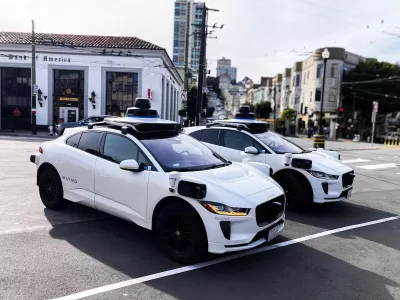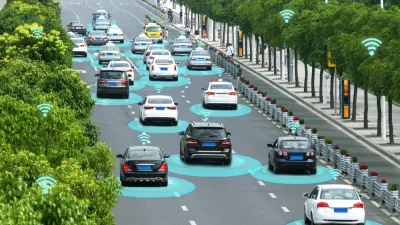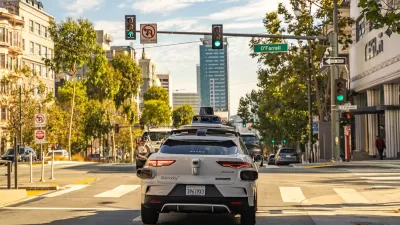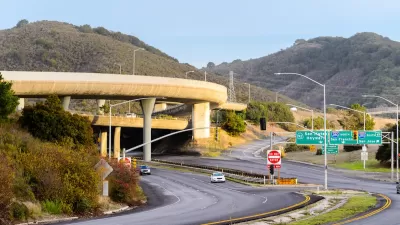Robotaxis can lead to longer, more frequent trips and are projected to increase VMT by as much as 83 percent.

The rise of autonomous cars could have numerous downstream effects, writes Jeral Poskey in an opinion piece in Smart Cities Dive.
Poskey points out several ways that robotaxis could be counterproductive to climate goals. First, robotaxis could induce more travel due to their visible upsides like convenience and the reduced financial burden. In the same vein, autonomous cars could encourage longer commutes, making people less averse to long commutes since they don’t have to drive themselves. Robotaxis also create more empty trips as cars circle around passenger-less, waiting for fares.
All told, with more frequent trips, longer commutes and more empty trips, a University of California-Berkeley study calculated robotaxis could increase total VMT by a whopping 83%, nearly double today’s levels.
An MIT study warned that these factors could lead to more sprawl as people find it easier to live farther from their jobs. “s destinations grow farther apart, more infrastructure, such as roads and parking, is needed. This, in turn, pushes destinations even farther apart, creating a spiral of sprawl that becomes self-perpetuating.”
Poskey advises that planners should think about how to build “better cities, not better cars.” Whether or not cars have human drivers, urban design and planning can guide development that is more sustainable and less car-dependent.
FULL STORY: The unseen environmental costs of autonomous cars

Alabama: Trump Terminates Settlements for Black Communities Harmed By Raw Sewage
Trump deemed the landmark civil rights agreement “illegal DEI and environmental justice policy.”

Planetizen Federal Action Tracker
A weekly monitor of how Trump’s orders and actions are impacting planners and planning in America.

The 120 Year Old Tiny Home Villages That Sheltered San Francisco’s Earthquake Refugees
More than a century ago, San Francisco mobilized to house thousands of residents displaced by the 1906 earthquake. Could their strategy offer a model for the present?

Ken Jennings Launches Transit Web Series
The Jeopardy champ wants you to ride public transit.

BLM To Rescind Public Lands Rule
The change will downgrade conservation, once again putting federal land at risk for mining and other extractive uses.

Indy Neighborhood Group Builds Temporary Multi-Use Path
Community members, aided in part by funding from the city, repurposed a vehicle lane to create a protected bike and pedestrian path for the summer season.
Urban Design for Planners 1: Software Tools
This six-course series explores essential urban design concepts using open source software and equips planners with the tools they need to participate fully in the urban design process.
Planning for Universal Design
Learn the tools for implementing Universal Design in planning regulations.
Clanton & Associates, Inc.
Jessamine County Fiscal Court
Institute for Housing and Urban Development Studies (IHS)
City of Grandview
Harvard GSD Executive Education
Toledo-Lucas County Plan Commissions
Salt Lake City
NYU Wagner Graduate School of Public Service





























